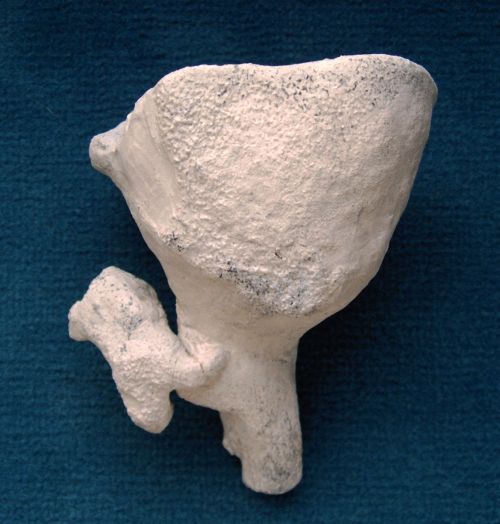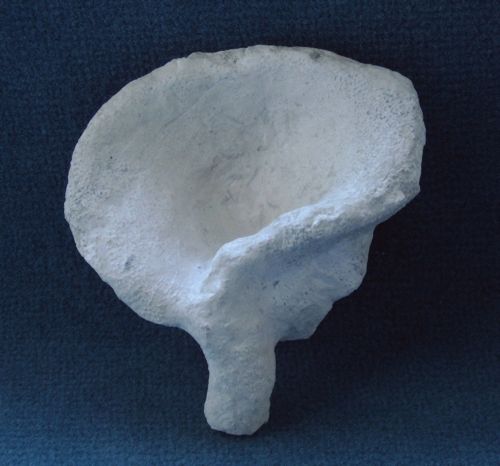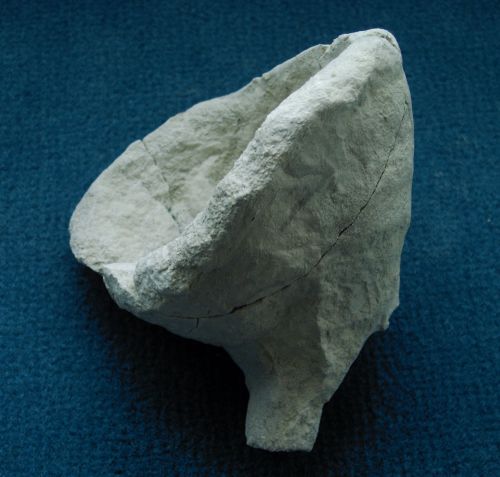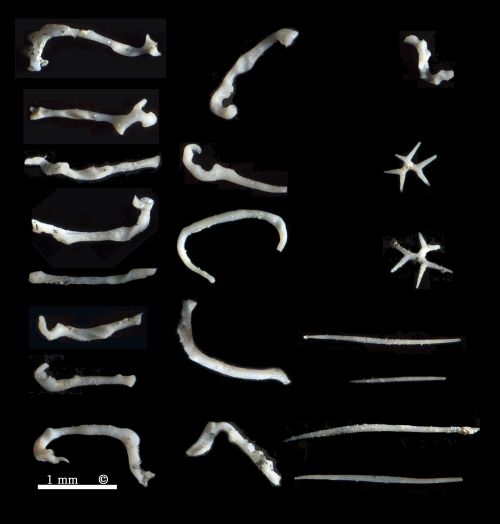
Pachycothon giganteum
Schrammen, 1901
Pachycothon giganteum is reported as a rare species from Misburg, but was apparently more common near Oberg (Schrammen, 1912). This is the first report for Höver.
The specimen of Pachycothon giganteum shown here is essentially a funnel or cup with a long stem. However, it is unusual, because the stem has a side branch with an irregular appendix of the same skeletal structure as the main cup. The cup wall is between 8 an 13 mm thick, and the rim is truncated to rounded.
The stem is fibrous, i.e. consists of aligned heloclones, whereas the cup consists of an irregular meshwork of zygosed, fairly large (1 mm) heloclones. The dermal side shows a locally preserved surface layer consisting of a felty mass of smaller oxeas, which are generally curved. Dermal dichotriaenes, reported for the species by Schrammen (1912), are not observed on this particular specimen. However, they were found in an HCl-Extract of a fragment from another individual (see below).

... Pachycothon giganteum

... Pachycothon giganteum

Spicules of Pachycothon giganteum
Pachycothon giganteum is one of the rare representatives of the porifera whose skeleton consists essentially of heloclones. Heloclones have many similarities with ophirhabs, but unlike ophirhabds they are not solitary. Instead, heloclones are zygosed with neighboring heloclones to form a rigid, lithistid skeleton.
In addition to the heloclones, the skeleton of Pachycothon giganteum consists of oxeas, which may be slightly curved. The dermal scleres are ortho-dichotriaenes whose shafts are about as long as the diameter of the cladome.